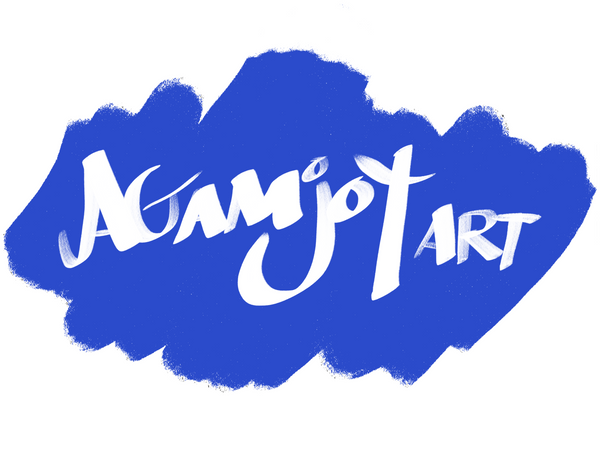Brushing Up On AI: The Artist’s Guide to AI Tools in Painting
Share
As an oil painter deeply committed to the rich tradition of classical techniques, I often find myself at a fascinating crossroads of art and technology. With the rise of artificial intelligence (AI), many artists are embracing new tools that enhance our creative processes without compromising our artistic integrity. In this post, I’d like to share how I’ve integrated AI into my workflow, making it an invaluable ally over the last few years.
Scaling Reference Images

One of the most persistent challenges I face as an oil painter is scaling reference images accurately to fit my canvas. For larger pieces, even the slightest miscalculation can lead to significant discrepancies between the reference and the final work. Thanks to AI tools, I can precisely scale my reference images with minimal hassle.
This is useful when sorting out document file sizes in Adobe Illustrator. If I have a referential design component that I will project onto canvas, I need to have accurate sizing and file settings for the digital file to pass through a specific aspect ratio on a projector, and arrive at the canvas for compositional ques which can serve to map the layout of the painting.
By combining AI technology with a projector, I can instantly adjust the size of my images, ensuring that I capture the proportion and perspective perfectly right from the start. This has significantly improved my working efficiency, allowing me to focus more on creativity rather than the tedious mathematics of scaling. In fact, my most recent art commission, was instrumental in using this method. It transformed the entire process, enabling me to produce more intricate details than ever before, with a simple compositional layout, that I sized to the canvas using AI's input for the digital file.
Color Palettes and Color Codes

Color selection is crucial in oil painting, as the right palette can evoke emotions and set the mood for the entire piece. However, navigating through countless color options can sometimes be overwhelming. With AI, I now have access to tools that generate color palettes and provide hex codes that align perfectly with the themes I want to express.
These AI-generated palettes have consistently inspired my work and led to unexpected combinations that I might not have considered otherwise. For instance, while preparing for a landscape piece, I discovered a stunning palette curated by an AI color generator that perfectly depicted the evening sky, and I couldn't wait to put brush to canvas.
In graphic design terms, It also comes in handy when working with specific companies, wherein specific brand colors must be referenced, AI can locate the exact hex codes for digital design purposes, that otherwise would have taken several minutes, now take a few seconds.
Historical Research Insights

Research is a vital part of any artistic endeavor, especially when delving into historical or complex subjects. Being able to quickly gather information can deepen the narrative and authenticity of a painting. AI has revolutionized my approach to research, providing instant access to facts, historical contexts, and visual references.
For my most recent project, a painting of the first Sikh Guru, Guru Nanak, I utilized AI to compile information on the Nanaksar depiction of Nanak, its cultural significance. This insight not only enriched the artwork but also gave me a more profound appreciation for the subject, transforming my painting into a vibrant storytelling medium.
Compositional Foundation

Studying classical masterpieces has always been essential for honing my compositional skills. Recently, I leveraged AI tools that analyze these masterpieces, suggesting compositional elements based on established principles and Fibonacci sequences.
By applying the AI insights, I was able to experiment with new arrangements I hadn’t considered before. One painting, in particular, was heavily influenced by the AI analysis of a well-known Baroque work, guiding me on how to structure my composition effectively. This fusion of tradition and innovation has allowed me to create pieces that feel both modern and rooted in art history.
Ideation + Brainstorming

Creative blocks are inevitable for any artist. AI has offered a refreshing solution, providing unexpected themes or concepts that I hadn’t explored yet.
Through AI-generated prompts and idea suggestions, I've been able to kickstart my brainstorming sessions. Recently, an AI tool proposed a unique cultural fusion concept that led to a vibrant series of paintings celebrating various traditions. This newfound direction brought life back into my practice and became the foundation for some of my most exciting works.
While I remain devoted to the tactile experience of oil painting, AI has become an indispensable tool that complements and enhances my creative journey. The integration of these technologies into my art-making process has opened new doors for exploration, efficiency, and inspiration.
Moreover, I’d like to express how beneficial AI was in crafting this very blog post. By assisting with research, providing structural support, and generating starting point ideas, I was able to craft the Blog post more effectively. As artists, embracing AI doesn't mean losing authenticity or artistry; instead, it empowers us to create with greater depth, innovation, and purpose.
As an artist, ask yourself these questions:
1. How can we use these tools to simplify redundancy, and increase productivity?
2. How can we leverage fast moving information, towards a solid factual foundation in a painting, design, or sculpture?
3. What technical components can be refined when working with facsimiles?
4. Where can I bolster the functional power of AI, but retain my creative authority?
I invite you to share your thoughts on AI in art creation. How has technology impacted your artistic practice? Let’s discuss in the comments below!
